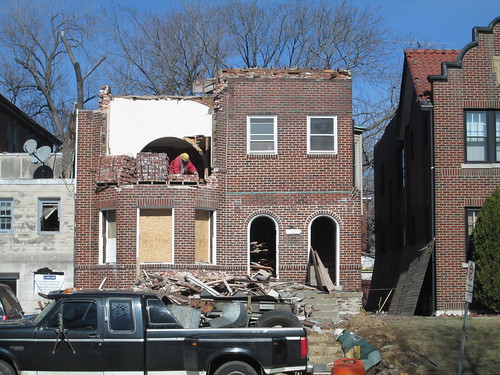
Demolition is a relatively rare occurrence in Skinker DeBaliviere, but this week a two-family building at 6177 Waterman is slowly disappearing.
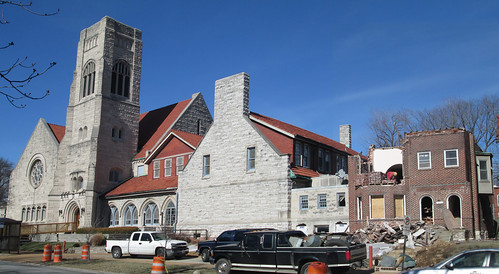
The building was for many years the parsonage for Grace United Methodist Church Which is located at Skinker and Waterman. The church was designed by a short-lived partnership of Theodore C. Link, Alfred Rosenheim & William B. Ittner. The building was originally constructed on Lindell Boulevard at Newstead, directly across from the New Cathedral (now the site of the Town House apartments). A chapel was built first in 1892, then the main church which was dedicated in 1897.
In 1913, due in large to westward migration of congregants and the donation of land, the decision was made to move to Skinker. Instead of building a totally new building, they deconstructed the building stone by stone and re-built it in a mirror image of the original! Sometime in the mid-20th century, a small addition connected the church complex to the parsonage. The St. Louis Chamber Chorus has a page with additional history about Grace UMC.
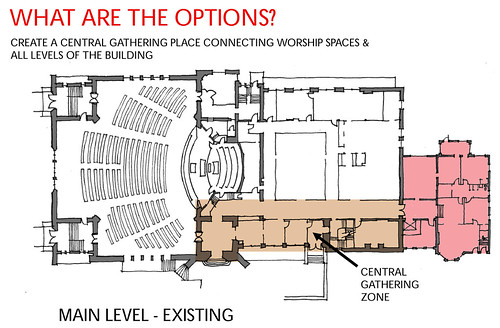
The decision to take down the parsonage is part of a larger renovation and re-configuring of spaces inside the church which were underutilized as well as create needed gathering space, better vertical circulation and a new entrance for accessible drop-off. The parsonage had not been used as a residence for many years and being built separately from the church, the floors did not align at all.
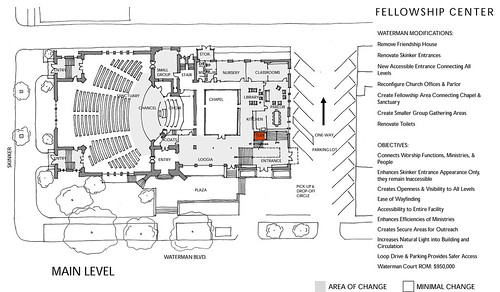
Another part of the program for the renovations was to provide some closer parking for elderly congregants who are currently shuttled in a golf cart to and from a parking lot a block north that is shared with a large apartment building owned by Washington University. Currently there is a small drop-off circle drive with a few accessible spaces.
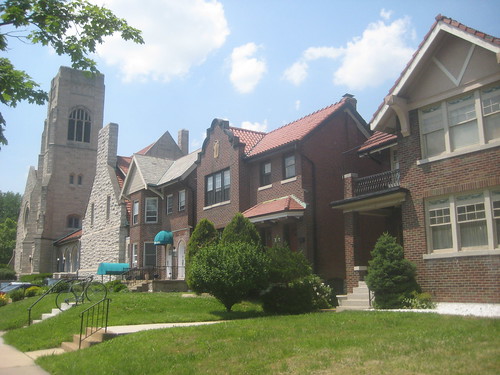
A view of the relation of the church, the parsonage (with teal dome awning) and the streetscape of buildings eastward.
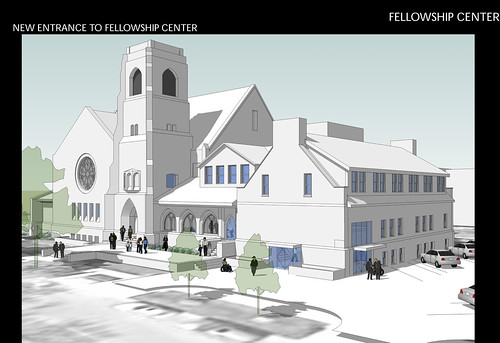
A rendering above from HKW Architects show how the east end of the church will look with the parsonage and connector addition removed. One of the items brought up by the architect during a presentation about the changes is that removal of the addition would restore the original structure and give unobstructed views of it as it was when originally constructed on Lindell. A Sanborn map of the original church location confirms this notion with the exception of a carriage house on the west portion of the property across the alley.
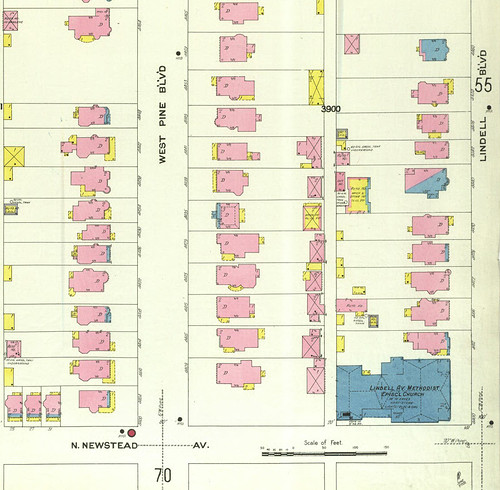
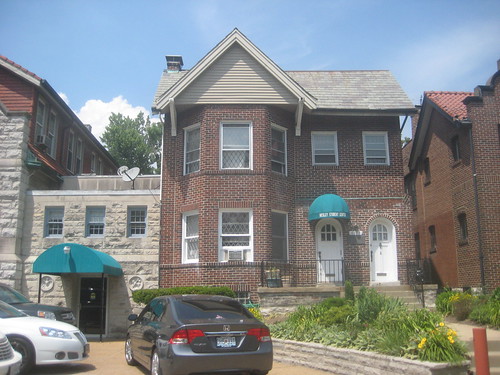
A close study of the the parsonage building and the two-family building directly east (pictured below) reveals that they are really the same building with two different facades. Built of the same brick, both have the double entrance with similar doors and a projecting two-story element with decorative roof feature. The outline of what had been a roof over the porch similar to the building below is visible behind the teal awning. Checking the City's property records on Geo St. Louis confirmed that the two buildings were both built in 1923.
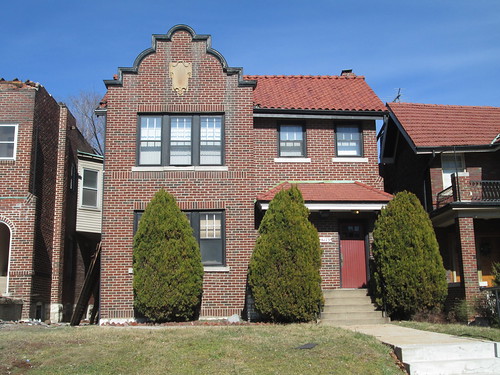
The demolition of this building was reviewed and ultimately approved by the Skinker DeBaliviere Historic District Committee of which I am a member prior to going to official approval from the City's Cultural Resources Office. In exchange for the demolition, I preferred demanding screening of the additional parking with a low stone or brick wall and landscaping, which would have reduced the 14 new spaces shown by 1 or 2, but other committee members did no seem to think this necessary. While I was one of a few dissenting votes, I understand Grace's desire to better accommodate its senior members. The issue of preservation versus neighborhood institutional needs was addressed well by Michael Allen in his recent post about the impending closure os St. Elizabeth Academy.
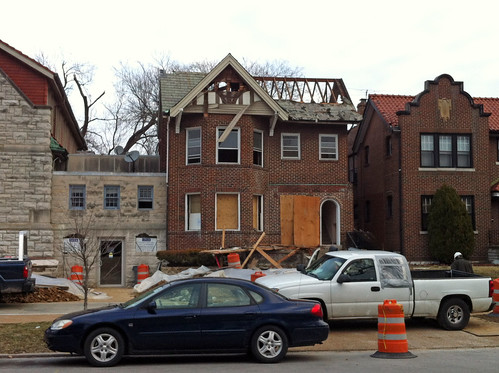
With demolition, the peeling away of vinyl siding reveals the hidden pattern of original half timbering at the gable of 6177 Waterman.
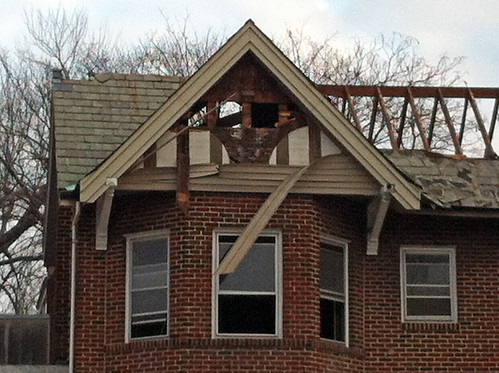

No comments:
Post a Comment